Digital Eye Care
Tips for Maintaining Visual Comfort in VR
FSDAVCFEBFEVSDDVFSD
FSDAVCFEBFEVSDDVFSD
FSDAVCFEBFEVSDDVFSD
Why VR Causes Eye Strain
Virtual reality headsets offer immersive entertainment and unique digital experiences, but they can also cause visual discomfort. VR eye strain is common, often due to prolonged near-focus visuals, reduced blinking, and poor headset fit. These factors make eye muscles work harder, leading to headaches, dry eyes, and blurred vision.
In some cases, VR can cause binocular vision stress when the eyes struggle to coordinate properly. This mismatch between what you see and feel can also trigger motion sickness, especially in users sensitive to sensory imbalance. As digital use grows, addressing these issues is essential for maintaining long-term visual health and comfort.
Virtual reality headsets offer immersive entertainment and unique digital experiences, but they can also cause visual discomfort. VR eye strain is common, often due to prolonged near-focus visuals, reduced blinking, and poor headset fit. These factors make eye muscles work harder, leading to headaches, dry eyes, and blurred vision.

In some cases, VR can cause binocular vision stress when the eyes struggle to coordinate properly. This mismatch between what you see and feel can also trigger motion sickness, especially in users sensitive to sensory imbalance. As digital use grows, addressing these issues is essential for maintaining long-term visual health and comfort.

Tips to Reduce VR Discomfort
To maintain visual comfort during long VR sessions, it’s important to follow several practical strategies. First, limit your VR use to 20–30 minutes at a time and take regular breaks. Using the 20-20-20 rule—every 20 minutes, look at something 20 feet away for 20 seconds—helps relax your eye muscles and reduces fatigue. Adjusting the headset’s brightness and contrast settings can also help lower visual overload, making the experience more comfortable for your eyes.
Second, ensure your VR headset fits properly. A well-fitted headset aligns the lenses with your pupils, reducing the risk of blurred or double vision. Cleaning the lenses regularly and maintaining an optimal display resolution are essential to prevent eye strain and enhance visual clarity. Proper headset fit and cleanliness support better eye comfort during VR use.
Lastly, staying hydrated and using artificial tears can prevent dry eyes, a common issue as blinking decreases during VR sessions. Consciously blinking helps maintain a healthy tear film. For frequent VR users, specialty lenses designed for screen-based vision, like NeuroLens, offer long-term comfort by improving binocular alignment and reducing eye strain. Combining these tips can help you enjoy VR for longer periods with greater visual comfort and less fatigue.
Benefits of Using NeuroLens Technology

NeuroLens technology addresses a common cause of digital vision discomfort: subtle misalignment between the eyes. Many VR users suffer from headaches, neck tension, and eye strain due to this misalignment, especially during extended sessions in virtual environments. NeuroLens works by customizing lenses with micro-prism adjustments tailored to each user’s unique visual profile, helping to correct the eye alignment and reduce discomfort.
At Kleinwood Vision, patients can undergo a specialized NeuroLens assessment to identify any alignment issues affecting their vision.Based on the results, personalized lens recommendations are provided to help alleviate VR-related symptoms like headaches, eye strain, and dizziness.

This technology is particularly beneficial for those who spend long hours using VR headsets, offering improved comfort and enhanced visual clarity. By addressing the root cause of eye strain, NeuroLens helps make virtual reality experiences more enjoyable and less taxing on the eyes.
If you’re already experiencing discomfort while using VR, scheduling a comprehensive eye exam is a crucial first step. This exam can help identify any underlying visual conditions that may be contributing to your symptoms, such as eye misalignment, focusing issues, or dry eyes. Early detection of these problems allows for targeted treatment, which can significantly improve your overall digital vision health and make your VR experiences more comfortable. Taking a proactive approach to eye care ensures that your visual system remains healthy despite extended screen time and immersive digital environments.
In addition to NeuroLens, there are other specialty contact lenses designed specifically to address digital eye strain. These lenses provide enhanced hydration to combat dryness, while also improving focus and clarity during prolonged screen use. For many users, these specialized contacts can reduce fatigue and discomfort, making long hours spent on VR headsets or other digital devices more manageable. Combining regular eye exams with advanced lens options offers a comprehensive solution to maintaining visual comfort in today’s digital world.
Ergonomics Are Crucial for VR
Ergonomics play a crucial role in ensuring comfort and reducing strain during virtual reality (VR) use. Proper headset fit is essential to avoid pressure points and prevent headaches or neck tension. Adjusting the headset so that the lenses align correctly with your eyes helps reduce blurred or double vision. Maintaining good posture while using VR also minimizes muscle fatigue and supports better overall comfort during extended sessions.
In addition to physical setup, taking regular breaks is vital for eye health and preventing discomfort. Following practices like the 20-20-20 rule—looking at something 20 feet away every 20 minutes for 20 seconds—helps relax the eye muscles and reduce strain. Combining ergonomic practices with lens options like NeuroLens can further improve visual comfort by addressing underlying eye alignment issues. Prioritizing ergonomics makes VR experiences more enjoyable and helps prevent long-term discomfort or injury.
Identifying Vision Symptoms Related to VR
Even short VR sessions can trigger symptoms of visual stress. Watch for early signs like eye fatigue, tension headaches, or difficulty refocusing on real-world objects after removing the headset. These signs often indicate digital eye strain, which can worsen over time without intervention.
Children and teens are especially vulnerable, as their eyes are still developing. If they regularly use VR for games or learning, it's essential to monitor symptoms and encourage breaks. Vision discomfort in young users could also indicate early-onset myopia, which Kleinwood Vision helps manage through evidence-based myopia control treatments.
Even short VR sessions can trigger symptoms of visual stress. Watch for early signs like eye fatigue, tension headaches, or difficulty refocusing on real-world objects after removing the headset. These signs often indicate digital eye strain, which can worsen over time without intervention.
Children and teens are especially vulnerable, as their eyes are still developing. If they regularly use VR for games or learning, it's essential to monitor symptoms and encourage breaks. Vision discomfort in young users could also indicate early-onset myopia, which Kleinwood Vision helps manage through evidence-based myopia control treatments.


If these symptoms persist, professional evaluation is critical. At Kleinwood Vision, our team can assess whether VR use is affecting your ocular alignment or triggering dry eye symptoms that require specialized care.
Avoiding Long-Term Vision Strain Effects
To protect your eyes over the long term, it’s essential to incorporate digital vision care practices into your daily routine. Scheduling annual eye exams and informing your eye care provider about your VR usage is a key step. This allows for early detection of vision problems that may arise from extended screen time or issues with binocular alignment. Early diagnosis can prevent symptoms from worsening and help maintain healthy vision.
Using blue light–filtering lenses while engaging in VR can also improve comfort. Although many VR headsets today use OLED or LCD displays with enhanced flicker control, blue light exposure may still cause discomfort for sensitive individuals. Specialty eyewear such as NeuroLens offers the benefit of blue light protection combined with precise alignment correction, providing a comprehensive solution for VR users.
At Kleinwood Vision, we also recommend dry eye therapy for those experiencing irritation like stinging, redness, or tearing during or after VR sessions. Custom treatments, including thermal therapies and in-office tear care, help restore the health of the ocular surface. This is especially important for people who spend long hours immersed in digital environments, where reduced blinking and screen glare can exacerbate dryness.
For patients diagnosed with binocular vision issues or accommodative dysfunctions, vision therapy can offer significant long-term benefits. These structured programs help strengthen visual coordination and improve eye function, which can greatly reduce VR-related eye fatigue and discomfort over time. By combining regular eye care, protective eyewear, dry eye treatments, and vision therapy, VR users can enjoy a more comfortable and sustainable digital experience.
Eye Exams for VR Users
Routine eye exams are essential for digital users, especially those who spend time in immersive environments like virtual reality. These exams help detect subtle vision problems that can cause discomfort, such as issues with eye alignment, focusing ability, and dry eye symptoms. Early detection allows for timely treatment to maintain visual comfort and health.
At Kleinwood Vision, we provide advanced testing specifically designed for digital lifestyles. Our eye care professionals evaluate how your eyes function in near-focus situations like VR and digital screens. Based on your results, we may recommend personalized solutions such as custom lenses, screen-friendly contact lenses, or NeuroLens, which helps correct alignment problems and reduce strain.

Routine eye exams are essential for digital users, especially those who spend time in immersive environments like virtual reality. These exams help detect subtle vision problems that can cause discomfort, such as issues with eye alignment, focusing ability, and dry eye symptoms. Early detection allows for timely treatment to maintain visual comfort and health.
At Kleinwood Vision, we provide advanced testing specifically designed for digital lifestyles. Our eye care professionals evaluate how your eyes function in near-focus situations like VR and digital screens. Based on your results, we may recommend personalized solutions such as custom lenses, screen-friendly contact lenses, or NeuroLens, which helps correct alignment problems and reduce strain.
If you’re frequently on the move or prefer not to wear glasses, multifocal contacts offer more freedom and convenience. They provide clear vision at multiple distances without the need for switching glasses, making them ideal for active lifestyles.
Taking a proactive approach by scheduling regular eye exams ensures your visual system stays healthy and comfortable. Don’t wait for symptoms to worsen—early care helps prevent long-term issues and supports clear, comfortable vision both in digital environments and everyday life.
Protecting Eyes in the Digital Age
As technology advances, our eyes are exposed to new visual demands. From virtual reality gaming to frequent video calls, modern digital activities can cause significant eye strain and discomfort. Managing these challenges requires regular eye care, proper ergonomic habits, and the use of specialized digital eyewear designed to reduce strain and improve comfort during prolonged screen use.
If you use VR frequently and start experiencing symptoms like headaches, eye fatigue, or blurred vision, it’s important not to ignore them. The professionals at Kleinwood Vision can help by providing tailored solutions based on your specific needs. Whether through customized lenses, advanced vision therapies, or specialized devices like NeuroLens, their goal is to protect your vision and keep you comfortable. Proactive care ensures that you can continue to enjoy immersive digital experiences while maintaining healthy eyes for the future. If you’re noticing symptoms, don’t wait—contact us today to schedule an evaluation.

Contact Info
Hours of Operation
Mon - Fri | 9:00 AM - 5:00 PM
Sat - Sun | Closed
Holiday Hours: We are closed for the following holidays: New Years Day, Memorial Day, Independence Day, Labor Day, Thanksgiving Day, Christmas Day
© 2026 Kleinwood Vision. All rights Reserved.


